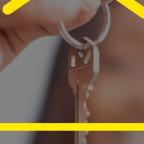
Streamlining Your Project: The Concrete Pumping Advantage
Construction projects, whether large-scale developments or small-scale residential builds, rely heavily on the efficient and precise placement of concrete. Traditional methods of manually pouring concrete are labor-intensive and time-consuming. This is where concrete pumping comes to the rescue. In this article, we'll explore how concrete pumping offers a significant advantage by streamlining construction projects of all sizes.
Understanding Concrete Pumping
Essex Concrete Pumps is a method used to transfer liquid concrete to hard-to-reach or elevated locations with ease and precision. It involves the use of a concrete pump, a specialized machine that uses hydraulic pressure to pump concrete through a system of pipes and hoses to the desired location. Concrete pumps are available in various sizes and configurations to accommodate different project requirements.
The Advantages of Concrete Pumping
- Precision Placement: Concrete pumps allow for precise and controlled placement of concrete. This accuracy is particularly beneficial when working on intricate designs or structural elements.
- Efficiency: Concrete pumping significantly reduces the labor required for concrete placement. It speeds up the process, allowing for faster project completion.
- Reduced Manual Handling: Manual concrete pouring can be physically demanding and may lead to injuries. Concrete pumping minimizes the need for heavy lifting and manual labur.
- Access to Difficult Areas: Concrete pumps can reach areas that are challenging to access with traditional methods, such as high-rise construction sites, tunnels, or narrow spaces.
- Consistency: The use of concrete pumps ensures a consistent mix and flow of concrete, reducing the risk of inconsistencies and imperfections in the final product.
- Cost-Effective: While there is an initial cost associated with concrete pump hire, the efficiency and time savings can lead to overall cost reductions on a project.
- Safety: Concrete pumping enhances on-site safety by reducing the risk of accidents associated with manual concrete pouring.
Types of Concrete Pumps
There are two main types of concrete pumps:
- Boom Pumps: These pumps have a long, articulated arm (boom) with a pump attached at the end. Boom pumps are suitable for projects that require concrete to be delivered to high or distant locations, such as multi-story buildings.
- Line Pumps: Line pumps are more compact and are mounted on a trailer or truck. They are ideal for projects with limited space or those that require concrete to be pumped over shorter distances.
How Concrete Pumping Works
Concrete pumping involves the following steps:
- Mixing: Concrete is prepared at a central mixing plant or on-site using a concrete mixer truck.
- Transport: The mixed concrete is loaded into the hopper of the concrete pump.
- Pumping: The concrete pump uses hydraulic pressure to pump the concrete through a network of pipes and hoses to the desired location.
- Placement: At the placement location, the concrete is directed precisely where it is needed, whether it's into formwork, on a slab, or within a structure.
Conclusion
Concrete pumping is a game-changer in the construction industry, offering a range of advantages that streamline projects and improve overall efficiency. Whether it's reducing labor, increasing precision, or accessing difficult areas, concrete pumping is a reliable and cost-effective method for the placement of concrete. It not only saves time but also enhances safety and ensures the consistent quality of the final construction product. For construction projects aiming for efficiency and excellence, concrete pumping is an indispensable tool in the toolkit.









